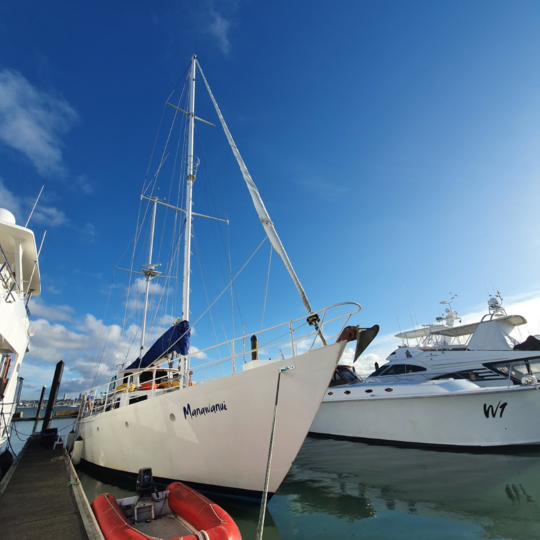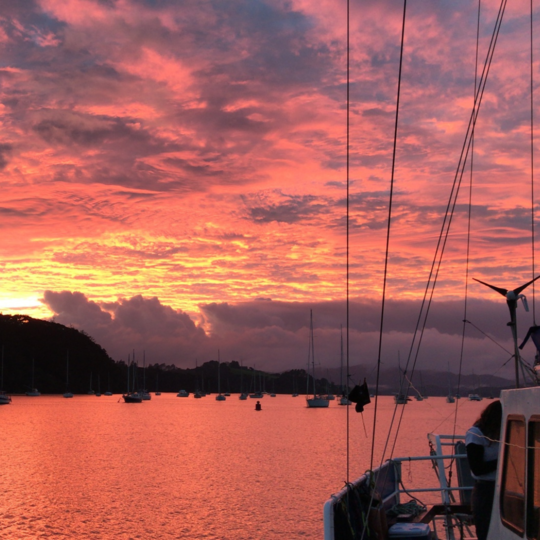Fishing for temperature
The Moana Project Mangōpare sensor was used on recreational fishing gear and on a science research voyage for the first
time as part of the Blue Cradle inaugural expedition in late June.
Ocean scientists from across Aotearoa NZ joined together with their scientific instruments on a Marine Microplastics and
Biosecurity expedition. The group sailed from Auckland to Opua via Leigh and Whangarei, hosted by Blue Cradle, a marine science and conservation organisation based in Christchurch.
The Far Out Ocean Research Collective's S/V Manawanui.
Sunrise at Tutukaka Harbour.
Packed aboard the Far Out Ocean Research Collective’s S/V Manawanui, the invited scientists showed that research can be
conducted from multiple platforms, and the Moana Project’s Mangōpare sensor was a prime example. Tied onto a fishing
line, the sensor was successfully deployed using a recreational fishing rod.
Dr. Aitana Forcén-Vázquez with the Mangōpare sensor attached to a fishing rod.
Dr. Aitana Forcén-Vázquez deploying the Mangōpare sensor on a fishing rod.
Dropping to a depth of 120 metres the sensor recorded temperature data (pictured below) showcasing its versatility and
ease of use. Once the sensor was reeled up to the surface, the data recorded was uploaded to the MetOcean cloud through a nearby deck unit which was mounted by Te Tiro Moana lead Dr. Julie Jakoboski prior to the expedition.
Deployment data showing the measurements taken from the Mangōpare sensor.
Dr. Julie Jakoboski aboard the S/V Manawanui in Auckland, attaching the Mangōpare sensor.
The data from this deployment showed that at the drop of a fishing line we can quickly and effortlessly gather sub-surface temperature data. The sensor automatically measures every 1m depth between the surface and 200m, providing a profile of water column temperatures that fishers or researchers can’t normally easily access in near-real time.
Founding Director of Blue Cradle, James Nikitine said of the expedition “This innovative research venture pushed boundariesand fostered connections among some of Aotearoa NZ’s great ocean scientists, across communities and institutions. The
Mangōpare sensor’s deployment on this trip has showcased the potential for citizen science, and pathways forward in the ocean research space.”
Making science accessible and available in recreational settings helps research to progress and become relevant to citizens. Alongside this citizen science case study, the Mangōpare sensor is currently being rolled out on a range of commercial fishing vessels around the country. More information on how to get involved with this effort can be found here and some statistics around the Mangōpare sensor can be found here.







